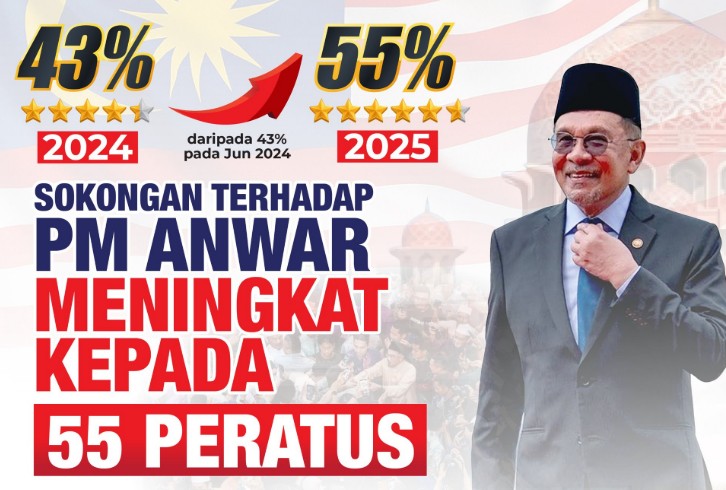By Devanesan Evanson
PRIVATE placement exercises have been in the radar lately in view of the increased private placement activities among PLCs to raise cash by selling shares to pre-identified and undisclosed investors.
According to data compiled by Bloomberg, Bursa Malaysia saw 151 deals in the first nine months of 2020, compared with 76 in the same period for 2019.
For cash-strapped companies, private placements allow them to raise cash quickly from investors, even though they may get lower valuations compared to raising funds through the capital market.
And given its faster execution process compared with other fund-raising methods, i.e., minimal regulatory requirements such as a prospectus or disclosure of detailed financial information – it is not surprising that private placement is becoming the method of choice for PLCs.
However, earnings dilution awaits minority shareholders as they are not included in the placement process. There is also the risk of future speculation on the shares, and minority shareholders often do not know the identity of the placees.
Under Chapter 6.15 of Bursa Securities Listing Requirements, the principal adviser that is appointed by the PLCs to submit the additional listing application of new shares to Bursa Malaysia will also submit the final list of placees to the exchange. However, this information need not be disclosed or announced publicly by the PLCs.
AirAsia’s private placement
Let’s examine AirAsia Group Bhd’s private placement exercise which has been hogging the headlines recently.
In January this year, AirAsia proposed to raise up to RM454 mil (assuming indicative issue price of 68 sen) via private placement of up to 20% of its share capital to third party investor(s) to address the group’s immediate cash flow requirements.
The exercise which is expected to be completed by 1Q FY2021 will increase AirAsia’s share base to four billion shares from the existing 3.3 billion.
On Feb 19 (Friday), AirAsia completed the first tranche of its proposed private placement comprising 369.8 million new shares or 11% of its pre-exercise share base at an issue price of 67.5 sen. The issuance raised proceeds of about RM250 mil.
Subsequently, Hong Kong investor Stanley Choi Chiu Fai emerged as a substantial shareholder of AirAsia after acquiring 167.1 million shares or a 4.17% stake through the private placement exercise. This brings his accumulated stake in AirAsia to 332.5 million shares or 8.96%.
Before the placement at 67.5 sen per share was announced, AirAsia was hovering around 70 sen – 80 sen.
On Feb 232, two days after AirAsia’s announcement on completion of the first tranche placement, the budget carrier’s share price surged as much as 14 sen or 17.17% to an intraday high of 95.5 sen, from the closing price of 81.5 sen the day before.
Shares of AirAsia closed at 95 sen on Feb 23, 2021.
The rise in share price has obviously widened the discount between price of placement shares and market price.
Of course, there would be some shareholders who have noted the price difference between the issue price of private placement (67.5 sen), and the market price (95 sen) – which is an appealing scenario indeed.
Shareholders may be wishing that there was a rights issue instead as they will then be able to subscribe for AirAsia shares, presumably at a rights issue price of around 67.5 sen, as they would be in the money. At the same time, they could avoid the dilutive effect arising from the placements.
However, there is no guarantee as to what the price will be when they get the rights shares. On the company’s part, if it needs the money urgently and does not have the luxury of time, it will resort to raise monies through a private placement exercise.
Is the private placement mandate being abused by PLCs?
Given that AirAsia needed cash since early last year, the company would have had more than enough time to raise funds via a rights issue.
But would the market sentiment and shareholders risk appetite be in favour of AirAsia back then? Maybe the market conditions then were not ideal for a successful rights issue.
On the flip side, maybe a rights issue was not an option for AirAsia as the existing substantial shareholders may not want to undertake or subscribe the rights shares. The undertaking from substantial shareholders is important to ensure that the minimum subscription level is achieved for a successful rights issue exercise.
In AirAsia’s case, there may be compelling reasons for a private placement as the preferred choice for fund raising – the airline is in dire need of massive fund injection at the shortest possible timeframe to keep it afloat.
Moreover, given AirAsia’s cash-strapped situation, which emanated from the adverse effect of global travel restrictions in the aviation industry, it is unlikely that banks would extend credit to the ailing low-cost carrier at a reasonable cost.
In this regard, Bursa Malaysia’s good intent of temporarily raising the 10% private placement general mandate to 20% during the height of the COVID-19 pandemic last April has benefited financially distressed PLCs like Air Asia.
Nevertheless, as the mandate was issued on an across-the-board basis – as opposed to case-by-case basis – it will not be far-fetched to assume that there are some PLCs which are taking advantage of the private placement mandate to raise funds when it would have been more equitable to all shareholders had they raised the fund through a rights issue.
A rights issue will not dilute the stake of shareholders.
Moreover, if the PLC is a company with a proven track record of generating value for shareholders, minority shareholders will not hesitate to partake in the rights issue exercise to support their companies.
After all, by subscribing the rights shares, minority shareholders do not only prevent a potential dilution to their shareholding but can also expect their investment to appreciate over time.
Private placement vs rights issue
Therefore, if the primary objective is to raise fund for value accretive expansion or project, a rights issue should be the preferred choice. That way, every minority shareholder will have an opportunity to participate in the growth of the Company.
Regardless of the size of the placement, the newly issued shares will, to some extent, have an immediate dilutive effect on earnings per share and net assets per share of the PLC given there will now be more shares in circulation.
In other words, the dilutive effect to minority shareholders is equal and proportionate to the size of the placement. In addition, concerns arise as to how long it will take before value can be accreted to the shares.
Regulators should perhaps intervene by being more stringent in the approval process of the private placement exercise.
This can be by means of requiring companies to identify their placees and offer disclosing their credentials to demonstrate their worthiness to be recipients of price-discounted placement shares.
Likewise, there should be disclosure on how the placees are able to add value to the company in the short, medium and long-term. Last but not least, the proposed utilisation of proceeds must be specific.
In China, market regulators are currently re-examining restrictions such as limits on the sale of shares bought via private placement and the mechanism for pricing shares in private offerings.
Should settlements under the LR be subject to shareholder approval?
Paragraph 10.07 (Chapter 10 – Transactions) of Bursa Securities Listing Requirements (LR) requires listed issuers to seek shareholders’ approval in relation to transactions with percentage ratio of 25% and above.
The word “transaction” in this context refers to the acquisitions and disposals of assets by a listed issuer and its subsidiaries.
In the same vein, should a material settlement which triggers the percentage ratios also be subject to shareholders approval? Should the spirit of the percentage-ratio requirements in the LR be applied? Shouldn’t the shareholders, who are also the owners of the PLC, have a say in the way the assets of the company are being used?
Maybe, it did not cross the mind of regulators when drafting the rules because the recent AMMB Holdings Berhad settlement was indeed ‘unprecedented’. It may now be time to re-examine the definition of “transaction”.
Had the definition of “transaction” in Chapter 10 of LR included settlements, AMMB would have been obliged to call for an extraordinary general meeting to seek shareholders’ approval of its RM2.83 bil settlement with the Malaysian Government as it had triggered the 25% threshold for percentage ratio compared to the market value of all the ordinary shares of the Company.
As for now, in our opinion, the LR does not require AMMB to call for an EGM to seek shareholders’ approval for the settlement.
Devanesan Evanson is the CEO of the Minority Shareholders Watch Group (MSWG)
The views expressed are solely of the author and do not necessarily reflect those of Focus Malaysia.








